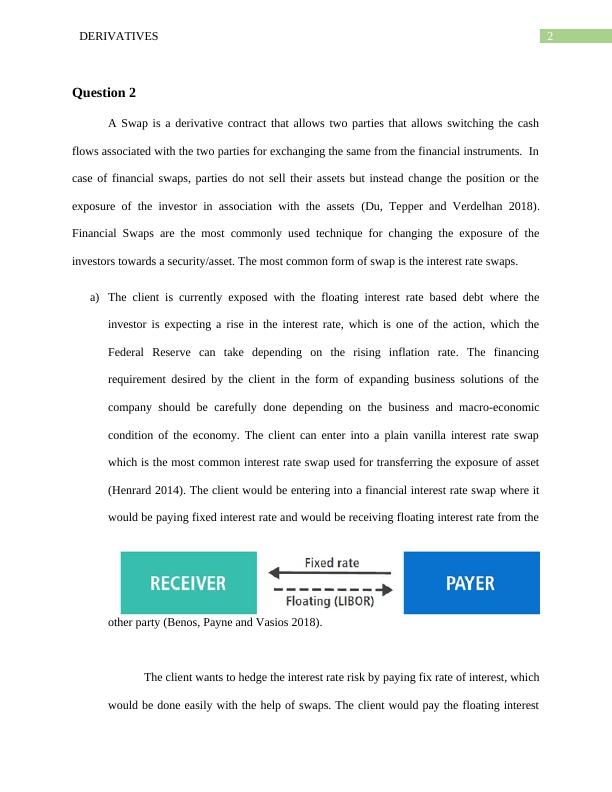Derivatives: Understanding Swaps and Interest Rate Caps
Preparing a report on how a client can use interest rate derivatives to hedge against interest rate movements in order to reduce exposure to interest rate risk on its cost of debt.
7 Pages1259 Words117 Views
Added on 2023-04-23
About This Document
This document explains the concept of swaps and interest rate caps as derivatives to hedge financial risks. It discusses the advantages and disadvantages of hedging and the importance of reducing financial risk associated with an asset or security. The document also mentions the need for hedging the financial exposure with the derivative contract to restrict the volatility of the stock beyond a certain range or level, allowing the client to limit the loss associated with the contract.
Derivatives: Understanding Swaps and Interest Rate Caps
Preparing a report on how a client can use interest rate derivatives to hedge against interest rate movements in order to reduce exposure to interest rate risk on its cost of debt.
Added on 2023-04-23
ShareRelated Documents
End of preview
Want to access all the pages? Upload your documents or become a member.
Swaps: A Study of Investment Hedging with Swaps
|13
|4200
|261
Assignment on Importance of Swaps Derivative Instruments
|13
|2875
|146
Derivatives: Financial Instruments for Risk Management and Speculation
|4
|1514
|86
Derivative and Its Four Types
|31
|5207
|301
Ema Questions 2022
|11
|3584
|16
Recommendations on Derivative Instruments for Various Hedges
|3
|1153
|68



